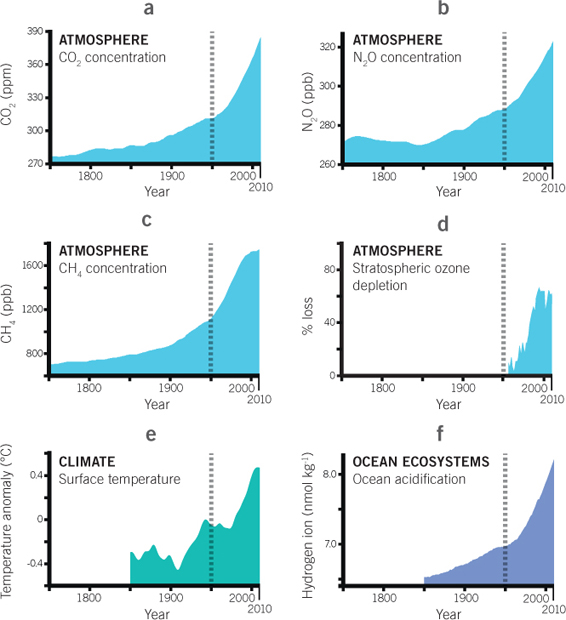
THE WORLD AS WE KNOW IT is a relatively new phenomenon. For most of Earth’s 4.5 billion-year history, conditions on the planet have been far less hospitable than they are today. It has only been during the past 10,000 years, in fact, that factors necessary for human societies to develop have been reliably present. Before that, Earth was often a horror show.
When our ancestors, the earliest hominids, first appeared in Africa some 2.5 million years ago, for example, they faced a series of crises as Earth shifted back and forth between punishing ice ages and lush warm periods. Even when modern human beings began to walk the planet about 160,000 years ago, survival was still not a sure thing. The world’s climate kept alternating between cold episodes of expanding ice sheets, water scarcity, low sea levels, and food shortages, and warm episodes of abundant water, high seas, and lush biomass resources. Although these swings weren’t extraordinary from a geological perspective—global temperatures varied less than 5°C (9°F) one way or the other—their consequences were huge for human survival.
Back then, the relatively small human population, fluctuating between a few million and tens of millions, lived as hunters and gatherers. During periods of extreme climate shifts, when it was hard to find food and shelter, they were confined to pockets of productive savannahs in Africa. In a critical cold period about 75,000 years ago, as DNA analyses have revealed, the entire human population may have dwindled to as few as 15,000 fertile adults, confined to the high plateau in northern Ethiopia. This constituted a profound crisis for our species. We’ve never been as close—in fact, one cannot be closer—to extinction. To find new sources of food, groups of survivors set out along the coasts of the Red Sea, which at the time may have been as much as 100 m (328 ft) lower than it is today (because so much freshwater was tied up in the polar ice sheets). Walking first through the southern Arabian Peninsula—then, as now, an arid and inhospitable environment—and then moving along the coast toward India, these groups, among others, eventually spread to Australasia and Europe some 40,000 years later.
It was the scale and rapidity of climatic changes that locked humanity into a semi-nomadic lifestyle. Sometimes these changes were abrupt. As researchers have discovered from ice cores drilled deep into ice sheets on Greenland, some changes over the past 100,000 years took place in a matter of only decades. About 11,500 years ago, for example, temperatures in Greenland shot up by 5–10°C (9–18°F) over a period of barely 40 years.
But then, about 11,700 years ago, Earth’s stormy climate tapered off, as we left the last ice age and entered a planetary state of natural harmony, the inter-glacial period we now call the Holocene. Humanity literally came in from the cold into a remarkably stable warm environment. Compared to what we faced during the Pleistocene 2.6 million years ago, humans now enjoyed relatively minor changes in climate. In fact, in both the Northern and Southern hemispheres, we quickly grew accustomed to an incredibly narrow range of climatic variation, with temperatures wobbling only about 1°C (1.8°F) up or down.
The impact was immediate. Almost as soon as we entered the Holocene, groups of hunters and gatherers in at least four different parts of the world independently invented agriculture more or less simultaneously. Clearly, the warm, wet, and predictable environment agreed with us. Within 1,000–2,000 years of this new regime, we saw a transformation of our way of life in many places from semi-nomadic hunting and gathering to sedentary farming, which proved to be the key to the development of modern societies. Agriculture allowed specialization, technology development, rules and norms, and dramatic growth in our capacity to provide food for populations.
It was at this point in history that we saw the rise of the earliest advanced human cultures: the Longshan Neolithic agrarian cultures of the Yellow River Valley in China; the ancient Egyptian irrigation societies along the Nile; the Mesopotamian irrigation societies along the Tigris and Euphrates rivers; the Greek and Roman empires; the Islamic civilizations in a large part of Africa and Central Asia; the agrarian societies of the Maya civilization in Central America. In their own ways, each of these agrarian cultures developed into advanced societies. Civilizations evolved through the Middle Ages, the evolution of the feudal merchant societies, eventually coupling with the rise of modern science during the late Renaissance, and ultimately the birth of nation states. We reached our first billion people by the year 1800, growing to three billion by the middle of the 20th century.
The onset of the Holocene, in short, was the planetary equivalent of establishing the ultimate shopping mall for humanity. Suddenly we had a reliable source of goods and services delivered from a stable equilibrium of forests, savannahs, coral reefs, grasslands, fish, mammals, bacteria, air quality, ice cover, temperatures, freshwater availability, and productive soils. The point of this story is as simple as it is dramatic: We still depend on the Holocene for our prosperity and wellbeing. It is the Garden of Eden for our civilizations. In fact it’s the only state of the planet we know that can support modern societies and a world population of more than seven billion people.
That’s why what we’re doing right now ranks as the most disturbing event in the history of humankind: We’re pushing our planet out of the Holocene into new and uncharted territory.
WELCOME TO THE ANTHROPOCENE
It didn’t take long—only a half-century or so—for the rapid pace of industry and agriculture to threaten the world as we know it. Since the great acceleration of the human enterprise, kicking off in the mid-1950s, humanity’s wide-ranging impacts—including climate change, chemical pollution, air pollution, land and water degradation, nutrient overload, and the massive loss of species and habitats—have put nearly all of Earth’s major ecosystems under stress. In fact, we humans, Anthropos in ancient Greek, have become such a massive source of global change that we now constitute a geological-size force on the planet, one even more extensive in magnitude and pace than volcanic eruptions, plate tectonics, or erosion. With reckless abandon, we’ve introduced our own geological epoch, the “Anthropocene.”
The trend started in the mid-18th century with the industrial revolution, when we learned how to exploit fossil fuels as a new, cheap, and effective energy source. This broke many constraints that had previously hampered social and economic development. Now we could clear land in an unprecedented way, changing a landscape almost instantly. We developed an industrial process, only possible with fossil-fuel energy systems, to convert nitrogen from the atmosphere into fertilizers, breaking a fundamental constraint on food production. We improved sanitation systems, which, along with major medical advances, yielded great benefits for human health and improved urban environments. Our populations grew rapidly as a result of higher life expectancy and wellbeing.
Manufacturing systems emerged that used fossil fuels to greatly increase production of goods. Unknown to us at the time, this rapid expansion of fossil-fuel usage was slowly raising CO2 concentrations in the atmosphere. By the early 20th century, CO2 concentrations had reached the highest limits since the Holocene epoch began. Even back then, in other words, we were saying goodbye to the world as we know it.
Figure 1.1 The Great Acceleration of Human Pressures on the Planet Starting in the mid-1950s, there has been a rapid increase in changes, on a global scale, to all the environmental processes that form the basis of our modern economy—all of it caused by human activity.
These curves reveal accelerations in the following: (a) the atmospheric concentration of CO2, (b) the atmospheric concentration of N2O due to agriculture and burning fossil fuels, (c) the atmospheric concentration of CH4 due to the expansion of livestock-production systems, (d) the percentage of ozone-layer loss due to ozone-depleting chemicals used by humans, (e) the anomalies in average temperatures in the Northern Hemisphere, (f) the increase in ocean acidification, (g) the percentage of global fisheries either fully exploited, overfished, or collapsed, (h) annual shrimp production as a proxy for coastal zone alteration, (i) nitrogen pollution of coastal areas, (j) the loss of tropical rainforest and woodland in tropical Africa, Latin America, and South and Southeast Asia, (k) land converted to pasture and cropland, and (l) the estimated rate of extinction of species on Earth. (The abbreviations used above are as follows: ppm/ppb is parts per million/ billion, nmol kg is nanomole per kilogram, and Mt is million tons.)
Figure 1.2 Exponential Impacts. The world embarked on the “Great Acceleration” of the human enterprise in the mid-1950s. At that time, the global population was about three billion people, with fewer than 0.4 billion having a lifestyle that significantly and negatively affected the global environment. At the same time industrial growth affected multiple environmental processes, leading to an exponential rise in negative pressures. Today we are at the top of that curve, maintaining the pressure on the planet. More and more science shows that we have reached a saturation point. We have hit the ceiling of what the planet can cope with, risking the onset of catastrophic changes. We urgently need to reverse the trend of detrimental global environmental change. This needs to happen in the current decade for most environmental processes in order to provide stable “Holocene-like” conditions in which we can secure prosperity in a still-growing world.
It wasn’t until the mid-1950s, though, a period we now refer to as the “Great Acceleration,” that the impacts of humankind’s activities grew to dangerous levels. There were still relatively few people on the planet at that point—about three billion in 1955—and we were still working under the mistaken assumption that environmental issues were separate from social and economic ones. But soon, by almost every measure, our growing populations and unsustainable habits piled on more and more environmental pressures. No matter which parameter you chose to look at—whether CO2 concentrations in the atmosphere from fossil fuels; nitrogen concentrations in the soil from agriculture and industry; methane concentrations in the air from livestock; ozone depletion over Antarctica; rising surface temperatures; floods and other extreme weather disasters; disappearing fish stocks; coastal disruption from fish farms; nitrogen pollution of coastal waters; loss of tropical rainforests; wild habitat converted to croplands; or increased rates of biodiversity loss—the trend was the same, with a sharply rising curve heading in the wrong direction (see Figure 1.1).
Today, having reached unprecedented levels, these pressures have generated a vise of global impacts we call the “Quadruple Squeeze” (see Figure 1.4). The first squeeze on our wellbeing comes from the quest for affluence on an increasingly crowded planet. Of the nine billion people predicted to inhabit Earth by 2050, almost all of the population growth is expected to take place in what are today poor communities in Asia, Latin America, and Africa. At the same time, as the latest assessments by the Organisation for Economic Co-operation and Development (OECD) show, the world economy is projected to almost triple by 2050. Most of this growth is expected to occur among the world’s poorer nations, whose economies are projected to expand five-fold. We’ll soon live in a world with not 1.5 billion, but rather four, five, or even six billion middle-class citizens. For the first time in modern history, it is possible to imagine a world in which absolute poverty has been eradicated.
This would be absolutely wonderful, and a grand marker of the right of all citizens to development and a decent life, but it entirely changes the prospects for human economic development. Many of the world’s resources have already been used by industries and nations that have exploited them as quickly as possible to benefit the wealthiest 20 percent or so of the global population. Now the remaining 80 percent, who have claimed little ecological space so far, are rightly claiming their own share of Earth’s resources. The problem is, this 80 percent aspires largely to the same unsustainable lifestyles as the wealthy 20 percent—the same social and economic paradigm that has caused our problems so far, born out of an inherited lack of environmental knowledge, responsibility, and concern.
A pair of putty-nosed guenon, tree-dwelling monkeys, are offered for sale as bushmeat by poachers along a roadside in Cameroon.
This is where world leaders have tended to put their heads in the sand. It’s apparently too painful for them to admit that, just when we’re finally getting a chance to go to scale with economic growth for a majority of the world’s citizens, they’re being forced to recognize that the old party is over. We’re hitting the hard-wired biophysical ceiling of Earth’s capacity to support continued unsustainable growth.
What we need now is a deep rethink, a total mind-shift about the way that our economies should develop within the life-support systems on Earth. If we’re serious about social and economic development for everyone, it must be founded on principles that are not only safe but also include a fair and just sharing of Earth’s remaining ecological space among all citizens today and in the future. This is a massive, and so far heavily underestimated, collision between meeting peoples’ needs and desire for affluence on the one hand, and securing a future within planetary boundaries on the other.
The second squeeze on our prospects comes from climate change. Since 1960, global CO2 emissions have jumped from about 4 billion tons of carbon a year to about 9 billion tons. This represents a very rapid growth, with the biggest amounts coming during the past 15 years, which is paradoxical, of course, since that was the only period in human history when governments have agreed to reduce emissions. Meanwhile, concentrations of CO2 in the atmosphere have risen from 280 parts per million (ppm) in pre-industrial levels to 400 ppm in 2014—the widely recognized ceiling with regards to acceptable climate risk. This represents, for all greenhouse gases (GHG), a concentration of approximately 450 ppm (CO2 equivalent), the highest in at least 800,000 years.
Because of the complexity of the climate system, it’s impossible to predict the exact amount of warming this increase in greenhouse gas emissions will cause. But the common understanding among scientists is that we can expect an average global temperature bump of about 3°C (5.4°F) if CO2 concentrations rise as high as 560 ppm—that is, a doubling compared to pre-industrial concentrations. Unfortunately, the latest fifth scientific assessment of the Intergovernmental Panel on Climate Change (IPCC AR5) shows that we are even exceeding this risk, and following a path toward 4°C (7.2°F) warming by 2100, based on the momentum of global increases in greenhouse gas emissions and the lack of progress by world leaders in climate negotiations. This path can’t be called anything but disastrous for humanity.
The world has already started to feel the consequences of rising temperatures. In fact, the signs are all around us: rapid loss of summer sea ice in the Arctic Ocean; retreat of mountain glaciers around the world; accelerated melting of the Greenland and West Antarctic ice sheets; an increased rate of sea level rise; and an increase in bleaching and mortality in coral reefs. During the past few years, we’ve also seen an exceptional number of extreme weather events, many of which were likely strengthened by climate change. After 12 years of drought, Australia was struck in 2010 by the largest flood in 50 years. Dams overflowed and agricultural yields collapsed in a disaster that caused a significant reduction in Australian gross domestic product (GDP) and influenced world market prices for food. Unprecedented floods swamped Pakistan, India, and Afghanistan, while droughts caused social disruptions in parts of West and East Africa. In the USA, a record 14 weather and climate disasters caused damage estimated at 1 billion USD or more, from extreme heat waves, droughts, and floods to tornadoes, hurricanes, wildfires, and winter storms. Clearly, changes in rainfall patterns could represent a serious threat if region after region suffers shifts in the frequency, magnitude, and duration of droughts, wildfires, storms, floods, and disease outbreaks, that, in turn, affect food production, trade, economic growth, and, ultimately, social stability.
Figure 1.3 The Impact of Affluence. Three dimensions are often used as indicators of human social pressure on the planet: the number of people (P), affluence (A), and the level of technology (T). According to a commonly used formulation known as IPAT, human impact (I) is a result of the combined effects of P, A, and T. Using world GDP as a proxy for affluence and the number of technology patents as a proxy for technology, this figure (adapted from National Geographic, March 2011) illustrates the evolution of the human global squeeze. Until 1900, the human squeeze was confined within the smallest box. Between 1900 and 1950 the cumulative squeeze increased only incrementally. From 1950 onward the world “exploded,” exerting a cumulative human squeeze corresponding to the entire volume of the largest box. But, it is not only size that matters. During the period before the “Great Acceleration” the human global squeeze was largely attributable to population growth—technology and economic growth mattered less. From the 1950s onward, the primary driver of the squeeze is affluence. This causes a major impact on the planet because we have used our wealth to buy “stuff,” which in turn generates environmental impacts that we now need to stop and reverse.
*GDP, or Gross Domestic Product, is the total value of goods produced and services provided in a country in one year.
The third major squeeze on global progress comes from the extraordinary pace with which we are undermining Earth’s biosphere—the marine, freshwater, and terrestrial ecosystems upon which all human societies depend. Never before have we eroded ecosystem functions and services as rapidly as we have during the past 50 years. Fish stocks have disappeared. Fish farms have disrupted coastal ecosystems. Coastal waters have been polluted with nitrogen and phosphorus. Tropical rainforests have been lost. Wild habitats have been converted to croplands, and we’ve seen dramatic reductions in biodiversity. In plain language, we’ve driven Earth to its weakest state since the advent of modern human societies, unwittingly limiting our options for the future.
The fourth “squeeze” on humanity’s “room for maneuvering” comes from the recent recognition that sudden, unexpected change appears to be the rule rather than the exception in natural ecosystems. Although we’ve built our entire relationship with nature—our governance systems, our economic paradigm, and our regime for resource use—on the assumption that the environment functions like a well-stocked mall, with goods and services gradually and linearly becoming scarce as we exploit them, we now know that’s not the case. If we overuse something in nature, it doesn’t automatically restore itself like consumer products on store shelves appear to do. That’s not how nature works.
During the past 30 years, research in resilience and complex systems has provided increasing evidence that the contrary seems to be true. Instead of continuous, slow incremental change, systems that over very long periods of time show signs of only gradual change can abruptly shift in pervasive and often irreversible ways. As Steve Carpenter, a researcher in aquatic ecosystems, has put it: “Ninety-nine percent of change in ecosystems appears to happen as a result of one percent of events affecting the system.”
Figure 1.4 The Quadruple Squeeze Humanity’s ability to secure long-term sustainable development is under pressure from four planetary squeezes: (1) population growth and affluence, (2) climate change, (3) ecosystem degradation, and (4) the risk of sudden change or surprise when ecosystem thresholds are crossed, which reduces the operating space for human development.
The first squeeze derives from population pressure, where the dominating force is affluence. The bulk of environmental problems so far have been caused by about 20 percent of the world’s population, the rich minority. The remaining 80 percent also have a right to pursue development.
The second squeeze is because we have almost reached 450 ppm of greenhouse gas concentration (CO2 eq) at a rate that suggests we are rushing toward 560 ppm, a doubling since the industrial revolution, even though science tells us we must not exceed 400 ppm if we want to avoid large risks.
The third squeeze is that we are rapidly eroding the resilience of Earth, having already undermined 60 percent of key ecosystem services in support of human wellbeing.
The fourth squeeze comes from the shrinking safe space for human development. We need to recognize that abrupt change is commonplace in ecosystems and that the way to deal with this is to build in redundancy and buffering.

Dubai City, in the United Arab Emirates, reflects the challenges of sustainable urban development—key to dealing with squeezes from population growth and affluence.
This alarming recognition—which will be further explored below—that nature often behaves in unpredictable ways, with the risk of major and often irreversible shifts from one state to another, fundamentally changes our relationship to the planet. To preserve the stability of biophysical systems, and thus Earth’s ability to support human development, we must invest in building ecological resilience—nature’s capacity to avoid undesired surprises. That requires investment in diversity and redundancy, in our ecosystems, biomes, and in our Earth system as a whole. We need ecological shock absorbers to buffer the stress of unexpected impacts.
These four squeezes, then, are the main pressures limiting our options for the future. It’s not difficult to see how we got here. Population growth, climate change, ecosystem degradation, and abrupt change are the flipside of a coin that has given us unprecedented social benefits. The rising curves of negative environmental change have a sister curve in rising human wealth. The latter is a remarkable success story. Despite the fact that absolute poverty remains stubbornly high, affecting about a billion men, women, and children, more people are wealthier than ever before in modern history. We produce 1.5 times more staple foods today than we did 50 years ago, outpacing population growth. We also use nearly four times as much energy. The average life expectancy in most nations exceeds 65 years, and women on average give birth to close to two children, two critical indicators of great success in improved human wellbeing.
In terms of social benefits, one could argue, it has been worth it. Environmental degradation, one could say, is simply the price we must pay to create wealth in a world with seven billion people. Unfortunately, this argument no longer holds true, and probably never did. We now know that sustainability, not over-exploitation, is the real basis for social wellbeing.
EVERYTHING IS CONNECTED TO EVERYTHING ELSE
The world as we know it has become an increasingly complex, turbulent, and globalized place, not only socially and economically but also ecologically. What we do in one corner of the planet now affects, in real time, living conditions for fellow citizens in other parts of the planet. The way we go to work in Sweden influences rainfall patterns for a small-scale farmer in southern Africa, and the way fishermen in Thailand manage mangroves affects weather patterns in England. The social–ecological wiring of the modern economy is now global.
Because of that, we can no longer act locally to further global development; we must also act globally to further local development. No matter how well environmental policies are applied in places such as the Galapagos, West Papua coral reefs, or the Arctic, their continued success now depends on the actions of other nations, regions, and economic sectors. Environmental protection can only succeed in combination with planetary stewardship.
Consider the unexpected impacts of forest losses in Borneo. During the past 20 years, the area under palm oil cultivation in Indonesia and Malaysia has roughly tripled, helping to accelerate—along with logging operations, soya bean cultivation, bauxite mining, and livestock operations—the destruction of the region’s remaining rainforests. The loss of these ecosystems, rich in biodiversity, has not only eliminated wildlife habitats, it has also undermined local communities, which depend on the rainforest for small-scale agriculture, forest management, and fisheries. Most people living in the Borneo rainforest get their protein not from the forest itself, but from the rivers flowing through it. Palm oil plantations load up the rivers with sediment caused by soil erosion, gradually destroying the waterways with nutrient overload and pesticides. This degrades fish stocks, which undermines the local people’s access to protein. If salaries aren’t high enough for workers to afford legal food sources, what happens next is an increase in the illegal bushmeat trade and, in time, a severe threat to vulnerable and endangered species.
Until recently, such stories didn’t mean too much to the rest of us. If industrial agriculture disrupted a distant community living off healthy local ecosystems, it was dismissed as a development failure—a local problem. But now this is changing. In an increasingly interdependent world, what happens in Borneo is affected by and affects societies everywhere. The notion that everyone lives in everyone else’s backyard is the new reality.
This was dramatically demonstrated in 2008 when massive forest fires broke out in Borneo. The island’s forest biome has always relied on the relatively dry conditions of a roughly four-year climate cycle to trigger re-growth of plants and trees. But deforestation has opened up landscapes even further. Combined with climate change, which has increased the likelihood of drought, deforestation has introduced fire to a region that had no prior fire regime. In fact, the forest fires that broke out in 2008 were so extensive they created an Asian “brown cloud” across Southeast Asia, contributing the equivalent of 30 percent of that year’s global emissions of greenhouse gases. Indonesia, which used to capture carbon with its vast rainforests, was suddenly one of the largest greenhouse gas polluters in the world. The “brown cloud” also reduced the so-called optical depth of incoming solar radiation (one of the nine planetary boundaries), where the thick smog of air pollutants dims incoming solar radiation and functions as a mirror, reflecting back incoming sunlight to space. This cools the planet, creating the paradox of one environmental problem (aerosols from forest burning and combustion) camouflaging another (emission of greenhouse gases). But it also affects regional rainfall patterns, such as the Southeast Asian monsoon, which in turn affects the economies of Singapore, India, Hong Kong, and beyond.
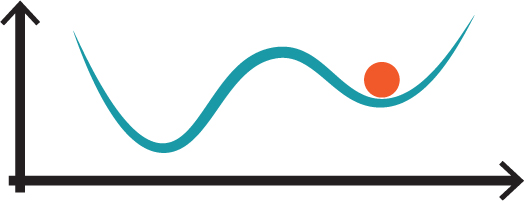
1 DESIRED RESILIENT STATE
A social–ecological system, such as a farming system, an urban region, or a coral reef, has an inbuilt capacity to take a hit—such as a drought or a financial crisis—and still “remain standing.” The deeper the cup, which represents the resilience of the system, the larger is the chance that the system, represented by the ball, will remain in the desired state after being hit by a sudden shock. A resilient system has a better chance of remaining in a desired state. It also has the capacity to adapt to changing conditions.
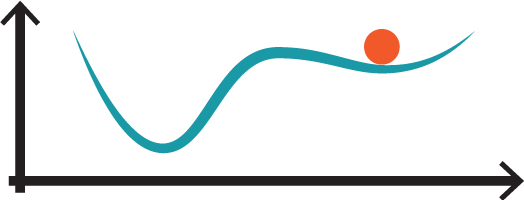
2 GRADUAL LOSS OF RESILIENCE
A system—such as a household, economy, forest, or polar ecosystem—gradually loses its ability to deal with shocks and stresses if it is not managed in a sustainable way. Examples of processes that erode resilience include indebtedness, excessive financial risks, loss of trust, or overdependence on a social safety net in human society; or loss of biodiversity, overuse of natural resources, climate change, or nutrient loading.
3 STATE SHIFT
A state shift occurs when a trigger or shock—such as a disease, drought, or flood—hits a system with low resilience. Feedbacks that hold the system in its desired state are replaced by opposite feedbacks that irreversibly draw the system to a new state. In a rainforest, for example, self-generating rainfall can be replaced by self-drying feedbacks characteristic of a savannah.
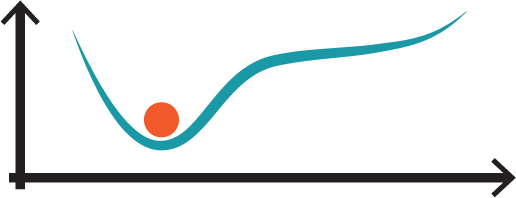
4 NEW STABLE STATE
The system gets locked into a new stable state if a reinforcing, positive feedback kicks in. Positive feedbacks accelerating climate change, for example, might include the release of methane from thawing permafrost, or melting ice lowering the planet’s reflectivity of incoming solar radiation.
Figure 1.5 Tipping Points in Ecosystems. There are many examples of state shifts in ecosystems, such as when a coral reef ecosystem flips from one with hard coral to one with soft coral dominated by algae. Those coral reefs still rich in biodiversity today are subject to multiple pressures from overfishing, climate change, and nutrient loading from agricultural runoff. This weakens the coral reef, and a bleaching event, disease, or hurricane can be enough to push the ecosystem across a threshold and flip it into a soft reef system dominated by algae. This actually happened in the 1998 El Niño event which warmed the Indian and Pacific Oceans above a critical threshold, causing a major bleaching event. Up to 90 percent of coral reef systems collapsed in large parts of the Caribbean Sea and Indian Ocean. Many tipped over into a new state of soft coral and seaweed-dominated systems, when a new feedback kicked in, stimulating rapid dominance of seaweed. In some parts, a rich diversity of fish, particularly grazers, enabled coral reefs to bounce back and remain in the desired hard coral state by grazing down the onslaught of seaweed and thereby enabling the regeneration of hard coral.
Examples of Regime-Shifts in Ecosystems
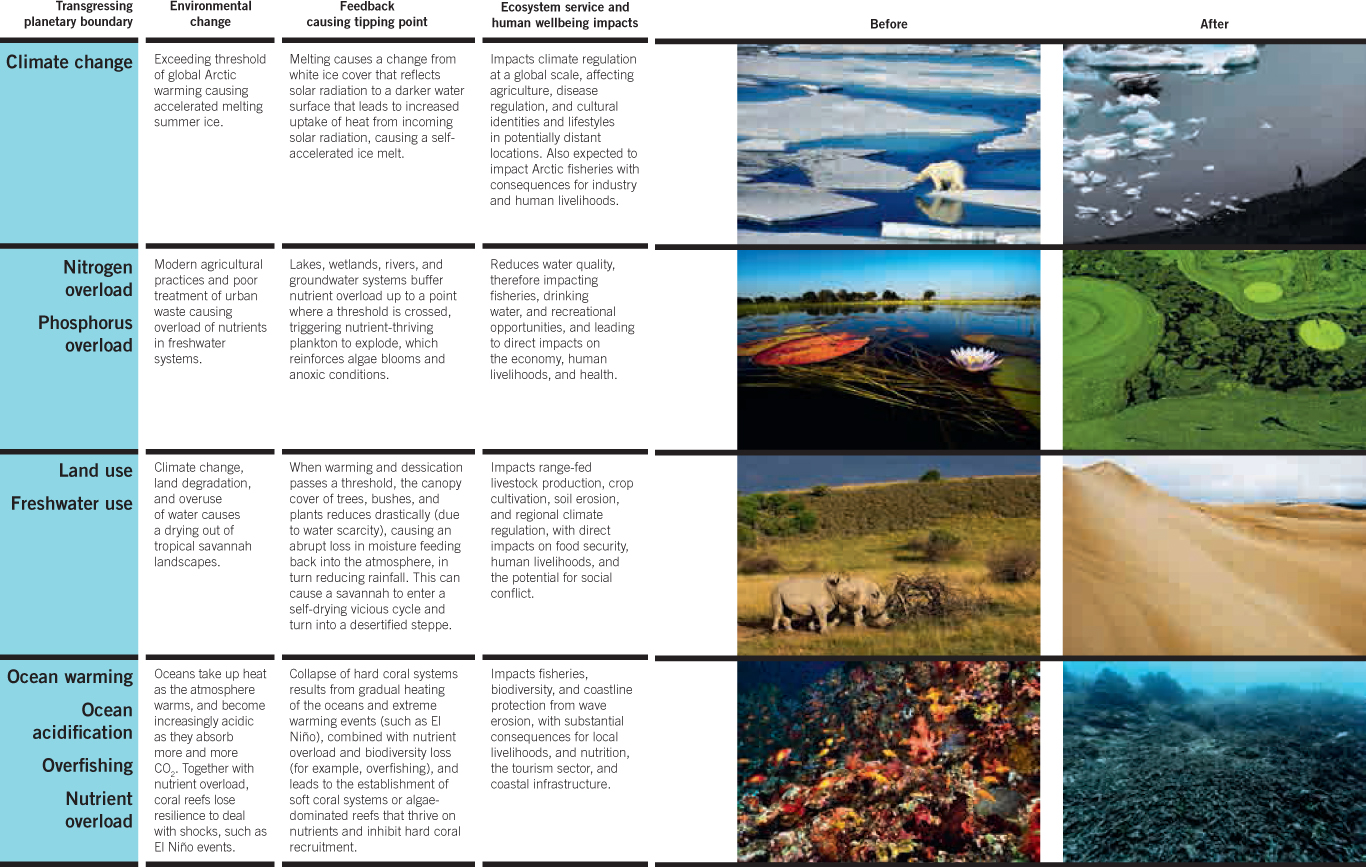
Figure 1.6 The Last Time Earth Was 2°C Warmer Than Today. Ice core data from Antarctica shows the planet’s swings in and out of ice ages over the past 800,000 years. The last time Earth was in a warm interglacial period was in the Eemian epoch about 120,000 years ago. For several thousand years, mean global temperatures were approximately 2°C (3.8°F) warmer than average pre-industrial temperatures. Sea levels then stabilized at 4–8 m (13–26 ft) higher than sea level today. This shows how sensitive Earth is to warming.
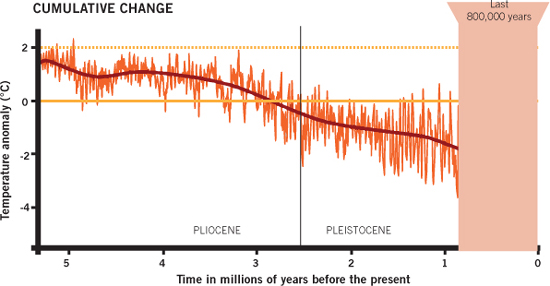
Figure 1.7 Five Million Years of Large Variability. During the past two million years, Earth’s climate has become colder and also more variable. In all this time, the average global temperature has never risen higher than 2°C (3.6°F) above the pre-industrial average—the level that world leaders have agreed that we should not now exceed, even though we know that major environmental changes will occur well before 2°C of warming.
Figure 1.8 Humanity’s Period of Grace. Temperature in the Northern Hemisphere, as revealed by ice core data from Greenland, has been extremely variable during the past 100,000 years. Humans were fully modern during this period, but comprised only a few million hunters and gatherers. After this extremely bumpy environmental roller-coaster ride, we entered the extraordinarily calm and predictable Holocene epoch. During the 10,000 years that this era has lasted, humanity has enjoyed a global average temperature that has varied up or down by only about 1°C (1.8°F). Everything in nature that generates wealth and human wellbeing settled in during the Holocene, forming the basis for the emergence of modern civilizations. This figure also illustrates how much greater temperature swings have been in the polar regions compared to the planet as a whole. While the world has warmed approximately 0.8ºC over the past 50 years, the Arctic has warmed at least twice as much.
SHOCK ABSORBERS FOR THE PLANET
Perhaps the most important thing we’ve learned about the biophysical behavior of the Earth system is that it regulates itself in a two-step approach. In the first step, when its resilience is high, it applies biological, physical, and chemical processes to resist change, applying so-called negative (dampening) feedbacks to persist in its original state—whether that state is a cold glacial equilibrium or a warm interglacial equilibrium. Then in the second step, as its resilience is lost and conditions reach a tipping point, a regime-shift occurs, sending the world on a journey toward accelerating heat or intense cold, with no turning back.
So far, in response to the massive disruptions caused by human activities, the planet has demonstrated an impressive capacity to maintain its balance, using every trick in its bag to stay in its current state. It has reduced the impacts of greenhouse gases, deforestation, and land degradation by absorbing substances, adapting ecosystems, and tweaking and turning food chains. Of the 9 billion tons of carbon we dump into the atmosphere every year, for example, Earth now absorbs about half in the oceans and land. This is undoubtedly nature’s largest free ecosystem service to the world economy and humankind.
Unfortunately, there is growing scientific evidence that we may have reached a saturation point in terms of our pressures on Earth. And the scariest part of this situation is that the planet’s response to further human disruption is not likely to be direct and predictable. The biggest global changes won’t come from the triggers themselves, but rather from the positive feedback processes they unleash.
We’ve already seen the first signs of positive (reinforcing) feedbacks at a large scale. Our forests and other terrestrial ecosystems may be sequestering carbon from greenhouse gas emissions at a slower rate than before. Oceans are rapidly acidifying as they absorb CO2 from the atmosphere, affecting marine life. Deforestation, loss of biodiversity, and overuse of freshwater and land resources have all remodeled the planet in a way that reduces its capacity to withstand disturbances such as climate change. This means that everything truly is linked to everything. We won’t stand a chance of avoiding dangerous climate change beyond a 2°C increase in warming unless we both reduce emissions of greenhouse gases and manage the world’s forests, grasslands, and oceans in a sustainable way.
In a hyper-connected world, crises propagated by natural feedbacks can spread rapidly—not only through ecosystems but also through political systems. In the new global architecture of interacting sectors—financial, political, agricultural, security, energy—a disturbance in one system or geographical region will propagate across boundaries, and ultimately grow to become a major global crisis. Again, surprise is the common denominator.
We thus need to be very careful before exhausting nature. The living biosphere, if handled with care, is an extremely effective—in fact our best—source of planetary-scale resilience. It provides us with an effective insurance policy against shocks caused by global environmental change, whether from natural or human origins. As an integral part of the Earth system, we could learn from nature’s example and model landscapes of our own that work as sources of resilience. But so far, as our predominant avenue of development, we’ve chosen another path. We’ve built systems, from agriculture to urban areas, that have reduced our resilience, giving us large benefits in the short term, while creating vulnerabilities in the long term. This hasn’t been a very intelligent strategy.
Although it might work for a while to support our wellbeing, it cannot be sustained indefinitely. A new strategy is urgently needed to slow, stop or even reverse the pace of global environmental change, while, at the same time, ensuring prosperity for a rapidly growing population. Accomplishing this while also addressing the needs of more than half of the world’s population, for whom poverty remains a reality, will be challenging. But as we see it, the only way to succeed is to recognize the virtue of the Holocene—and to do everything we can to preserve this stable and beautiful state of the planet, which is the one state we know that can support the modern world as we know it.
Following pages: Fishermen crowd a small boat off Tanzania, facing dwindling fish resources in part due to illegal operations by long-distance fishing boats.